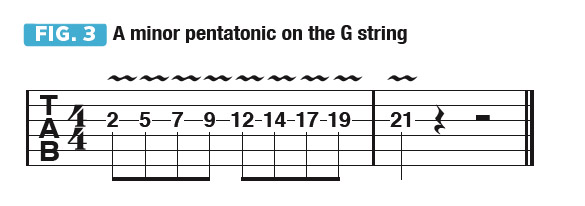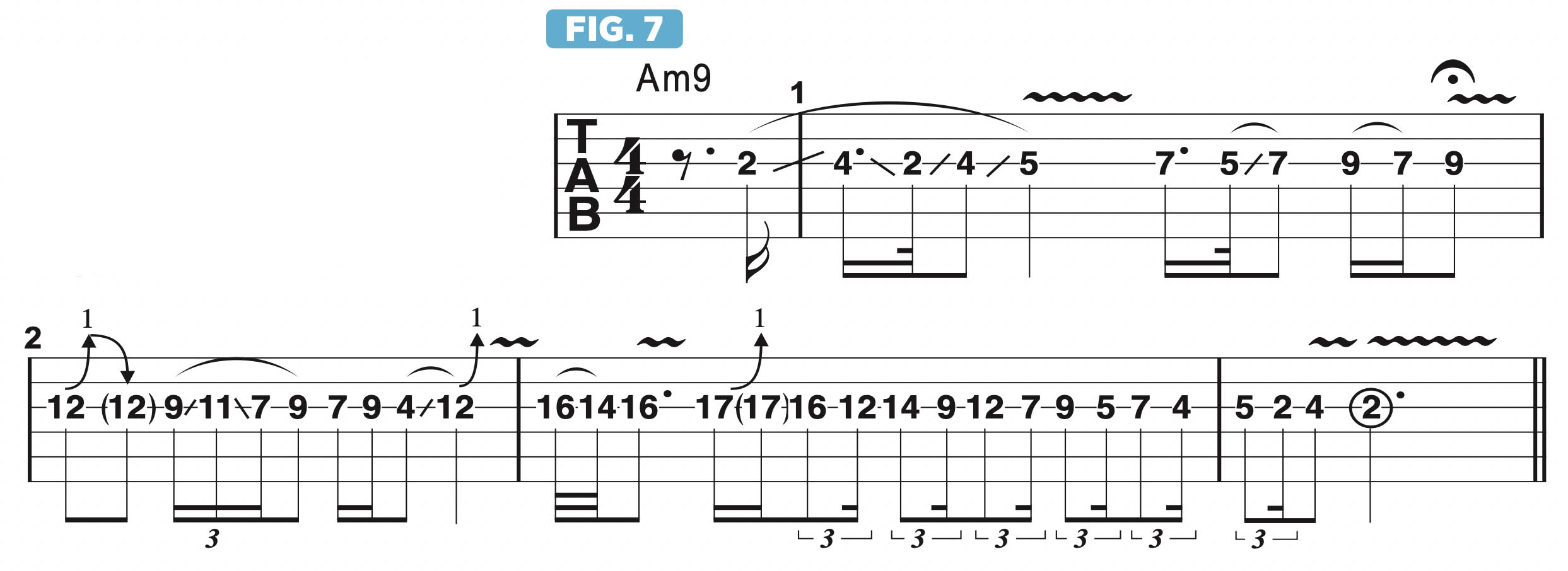How to produce greater musical expression and variation while playing up and down one string
Andy Timmons' debut column will teach you new ideas for incorporating melodies in your soloing
Hello and welcome to my first-ever series of columns for Guitar World magazine. In this first lesson, I’d like to get into the concept of where melody comes from, and how to better apply a melodic approach to your playing.
Many guitarists tend to focus on scales, such as the A minor pentatonic (A, C, D, E, G) shape shown in Figure 1.

We then learn specific patterns and licks that lay the foundation of our soloing vocabulary, such as the line shown in Figure 2. When I solo, I’ll sometimes rely on this kind of position playing, but over the years I''ve become more attracted to the idea of horizontal or linear playing, moving up and down the fretboard on just one or two strings.
This approach frees me from thinking about scalar patterns, as I'm listening for melodic opportunities that avail themselves while I move freely around the neck. For the next three examples, I’m thinking “globally” in the key of A minor and relying entirely on the notes of A minor pentatonic. Let’s try the approach of using one finger on one string.

In Figure 3, I sound each note of A minor pentatonic while ascending the G string. The concept here is to find and play each note and add a little vibrato as you move from one note to the next.
Moving up and down a single string like this, as opposed to playing positionally across multiple strings, is a great way to free yourself from all of those habitual licks and phrasing schemes that you have relied upon for years.
This approach also forces you to really listen to the sound and expression of each note, which serves to fortify the natural, singing quality that we’d like to achieve.

Figure 4 is based on this approach, albeit with the occasional use of a few notes on the B string. This is a great way to blend and link together fragments of patterns in different positions.

In Figure 5, this approach is applied to playing over a static Am9 chord, playing the phrases with a “free” feeling, without any strict tempo or rhythmic grid.
When playing this way – which is something you'll hear in some of Jimi Hendrix's solos, such as May This Be Love – one can zero-in on what I consider to be the most important aspects of playing: touch, tone and dynamics.

If we add the notes B and F to A minor pentatonic, the result is the A natural minor scale (A, B, C, D, E, F, G) as shown in Figure 6.

Figure 7 offers an improvised solo based on A natural minor. In the next two columns, I'll demonstrate some ways to expand upon this concept in the effort to fortify your connection to a more melodic approach to soloing. See you next month!

Get The Pick Newsletter
All the latest guitar news, interviews, lessons, reviews, deals and more, direct to your inbox!
Andy Timmons is a world-renowned guitarist known for his work with the Andy Timmons Band, as well as Danger Danger and Simon Phillips.










![Joe Bonamassa [left] wears a deep blue suit and polka-dotted shirt and plays his green refin Strat; the late Irish blues legend Rory Gallagher [right] screams and inflicts some punishment on his heavily worn number one Stratocaster.](https://cdn.mos.cms.futurecdn.net/cw28h7UBcTVfTLs7p7eiLe.jpg)
